Introduction: Gena Philibert-Ortega is a genealogist and author of the book “From the Family Kitchen.” In this blog article, Gena searches old newspapers to learn about a courageous woman who had a remarkable four-year adventure in the South Seas during the 1920s: Caroline Mytinger.
I love finding a real treasure. That’s exactly what happened to me during a recent trip to the beach. While there, I ducked into a favorite antique store and started perusing the books. A jacketless book’s title jumped out at me: Headhunting in the Solomon Islands around the Coral Sea by Caroline Mytinger. That title was enough to pique my interest – and then when I read the name of the author I knew I had to buy it.
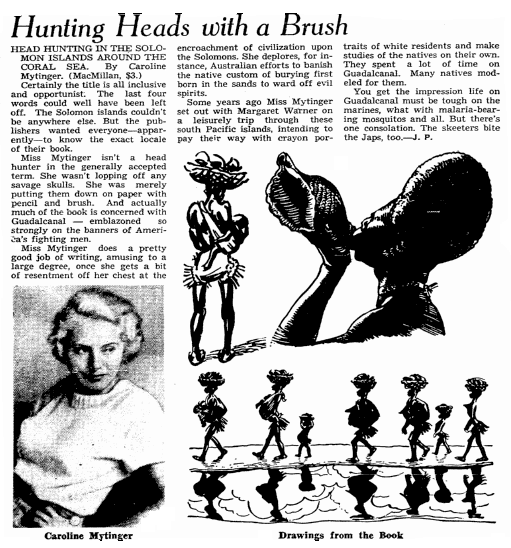
Caroline Mytinger
I expected with a title like Headhunting that it was the story of a man’s dangerous adventures abroad. But instead it is a book authored by a woman who in 1926 took a journey to the South Seas (Solomon Islands and Papua New Guinea) with her friend Margaret Warner. Caroline Mytinger was a model, author and artist who specialized in portraits. Armed with Caroline’s art supplies and Margaret’s ukulele, they traveled to the Solomon Islands to paint and document the native peoples. In the four years they were on their adventure, as one would expect, all kinds of calamities befell them – from losing Caroline’s art supplies to becoming dangerously ill with malaria.
Caroline Mytinger was born in California in 1897 but soon moved to Cleveland with her mother. Not only was she a talented and adventurous artist, she was also beautiful and the subject of other artists’ work including Charles Dana Gibson and William J. Edmondson. In this picture of her from a 1920 Illinois newspaper, the caption says of Caroline that she is “known as Cleveland’s most beautiful woman.”
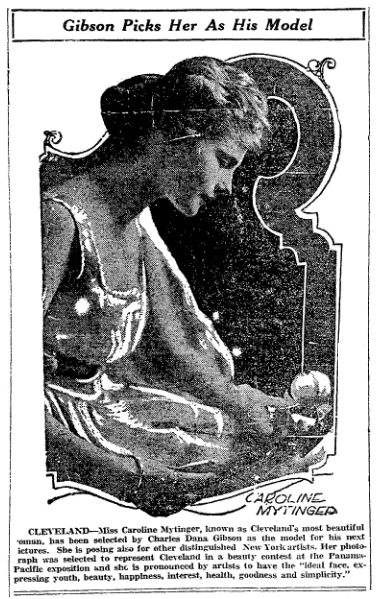
The Voyage
With very little money but a large sense of adventure, the two women left from San Francisco in 1926 with only $400 in their pockets, the needed funds to ship themselves back. They lacked not only financial support but the support of friends. Mytinger writes in Headhunting:
…those disbelieving friends had a case when they said no female outfit such as ours could go alone to paint headhunters and come back with their own heads. No man had done it. No man had yet tried, we replied.*
This 1930 Ohio newspaper article, with portraits of Caroline and Margaret, tells about their decision to travel to the South Seas so that Caroline could paint, documenting a vanishing population.
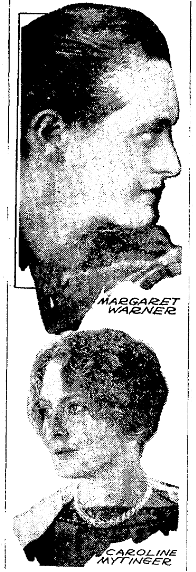
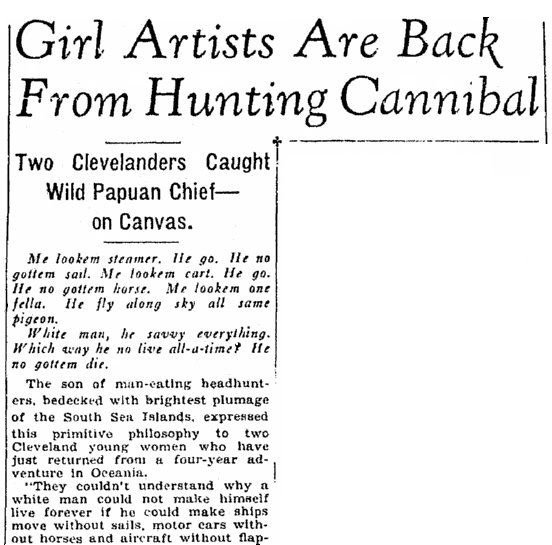
Interestingly this article indicates that it was an event in California that led them to the South Seas:
Their yearning for the sight of primitive people got its impetus at a great Indian funeral ceremony at Palm Springs. Savage grunts and rhythm of the red man’s great mass funeral orgy aroused Miss Warner’s curiosity. Miss Mytinger was stirred by the colorful primitive pageantry of the death dance. They set their hearts on a visit to the South Seas.
The duo raised funds through Caroline’s portrait painting and travelled to Fiji, New Zealand, Australia and New Guinea over the course of four years.
Returning Home
What did Caroline do once she came back to the United States? She continued sketching and painting portraits and waited a decade before she wrote of her travels.
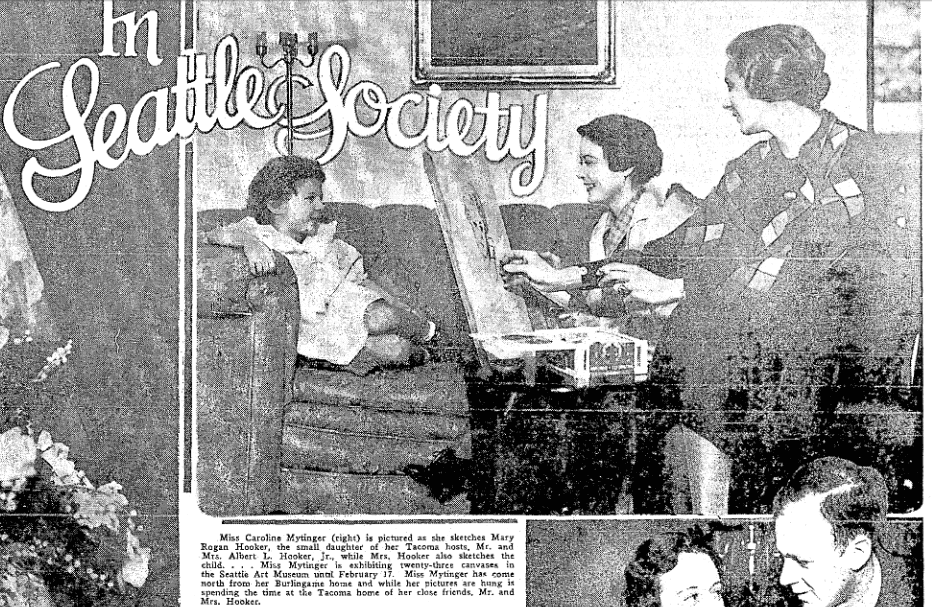
Mytinger continued sketching society families to earn her living, including this portrait of Anita Thorne Corse that was used for her newspaper marriage announcement to Brigadier General David L Stone.
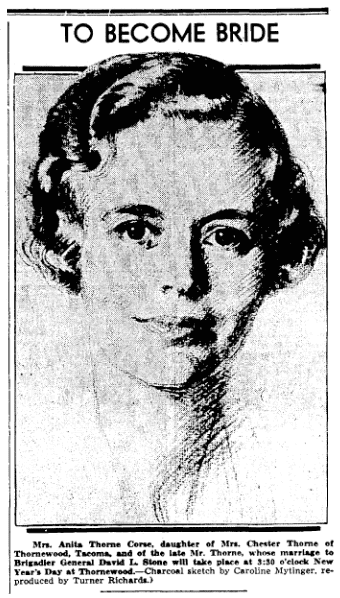
Her paintings were the subject of exhibits, including one at the American Museum of Natural History under the guidance of anthropologist Margaret Mead. This 1935 Washington newspaper article describes her exhibit at the Seattle Art Museum.
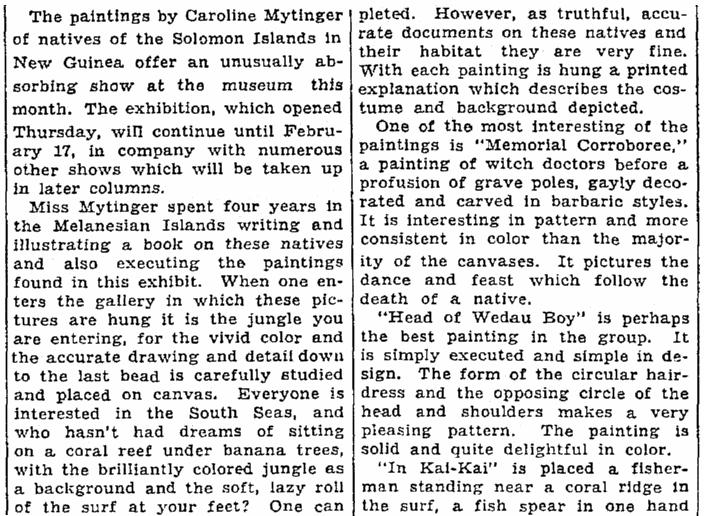
Headhunting
Caroline’s first book, Headhunting in the Solomon Islands around the Coral Sea, was published in 1942 and would have been interesting to Americans for a number of reasons. Aside from the novelty of the topic – two young women on an adventure in the South Seas in the 1920s – World War II was raging, and as this book review points out:
Here is a book which makes a definite contribution to our knowledge of the Solomon Islands, where the fate of East Asia is being determined in jungle battles between American and Japanese fighters.
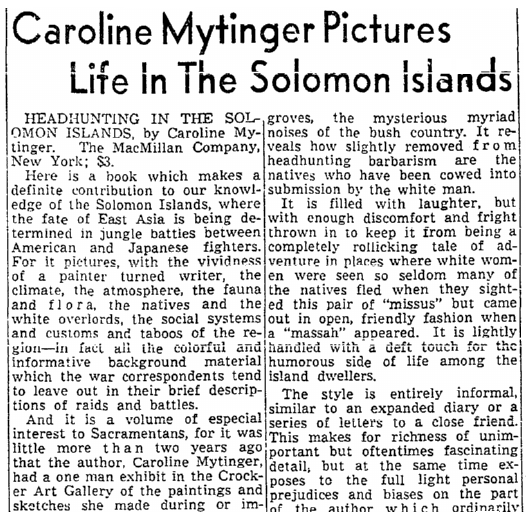
In preparing for that trip she “…took a long time reading anthropology, took courses in anatomy and made careful drawings of the skulls of different races.” The reviewer writes that Caroline used her voluminous diaries from her trip to write her manuscript. So it’s probably not surprising that the book’s “…style is entirely informal, similar to an expanded diary or a series of letters to a close friend.”
Like many authors, Mytinger also spoke to groups about her travels and her book. For this presentation in Sacramento, California, she brought with her some of the art items she had collected on her trip, including “…man hunting arrows, spears, dance masks, dance accessories, canes, figurines, and a comb.”
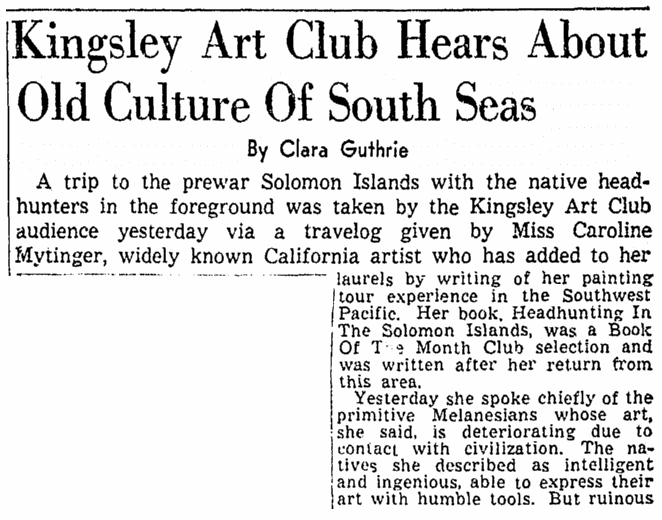
After Headhunting
Caroline wrote one more book about her travels, published in 1946, utilizing once again the attention-grabbing word “headhunt” in the title. New Guinea Headhunt was the sequel to Headhunting and continued to tell the tale of her and Margaret’s adventures. This book reviewer articulates why Mytinger’s books were popular:
The women suffered headships and tropical diseases, endured many of the deprivations which later were to become so well known among American and Australian troops, were frightened almost out of their wits by cannibal tribes, had close calls in the surf, visited places where white women never had been seen and generally had adventures which would make the average white woman gasp with fear.
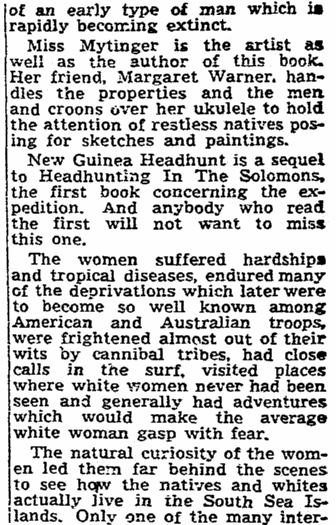
It seems that Caroline’s remaining years may not have been as exciting as her life in the 1920s. She continued to paint and lived in Monterey, California. She donated some of her paintings from her South Seas trip to the University of California at Berkeley’s Phoebe Hearts Museum of Anthropology. You can view these paintings on their website.
Caroline Mytinger died on 3 November 1980 in near obscurity. Over the decades her books chronicling her adventures went out of print and her 15 minutes of fame were over. But 80 years later, two female Seattle-based photographers decided to recreate Caroline and Margaret’s adventure. Their website Hundhunt Revisted chronicles their travels and their work at getting a documentary film made.
In the introduction to Headhunting, Caroline writes that “A woman’s destiny, they say, is not fulfilled until she holds in her arms her own little book…”** It would seem that Caroline fulfilled her destiny at a time when women were often labeled housewives and not adventurers.
—————————–
* Mytinger, Caroline. Headhunting in the Solomon Islands around the Coral Sea. New York: The Macmillan Company, 1941. p. 3
** Ibid, p. ix.
Related Articles:
